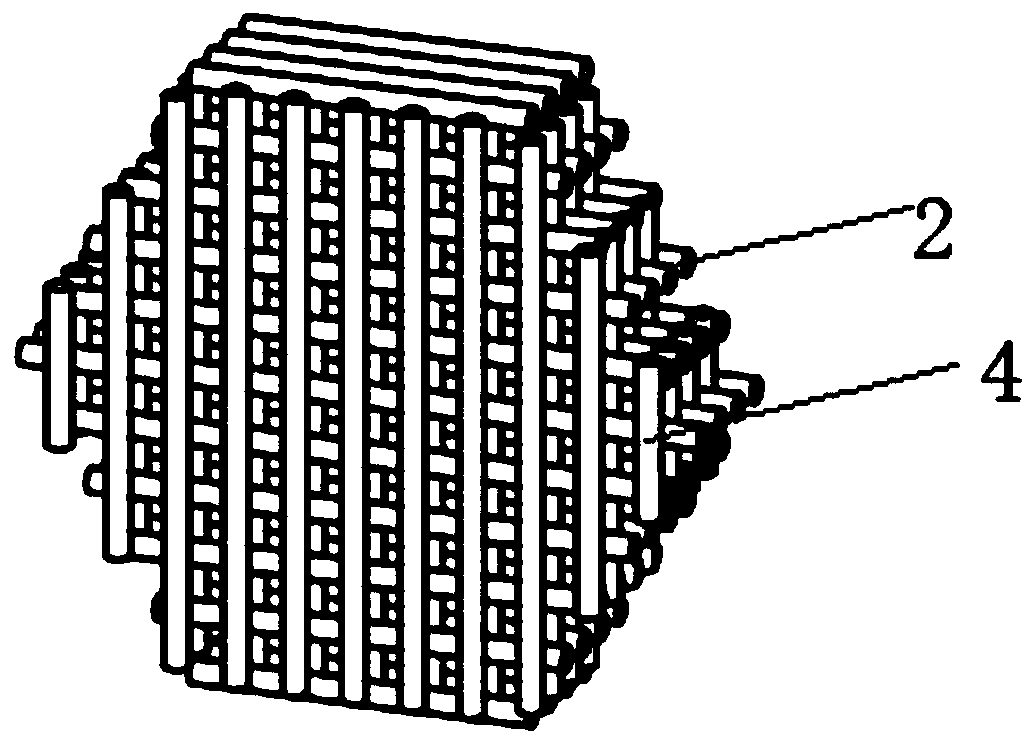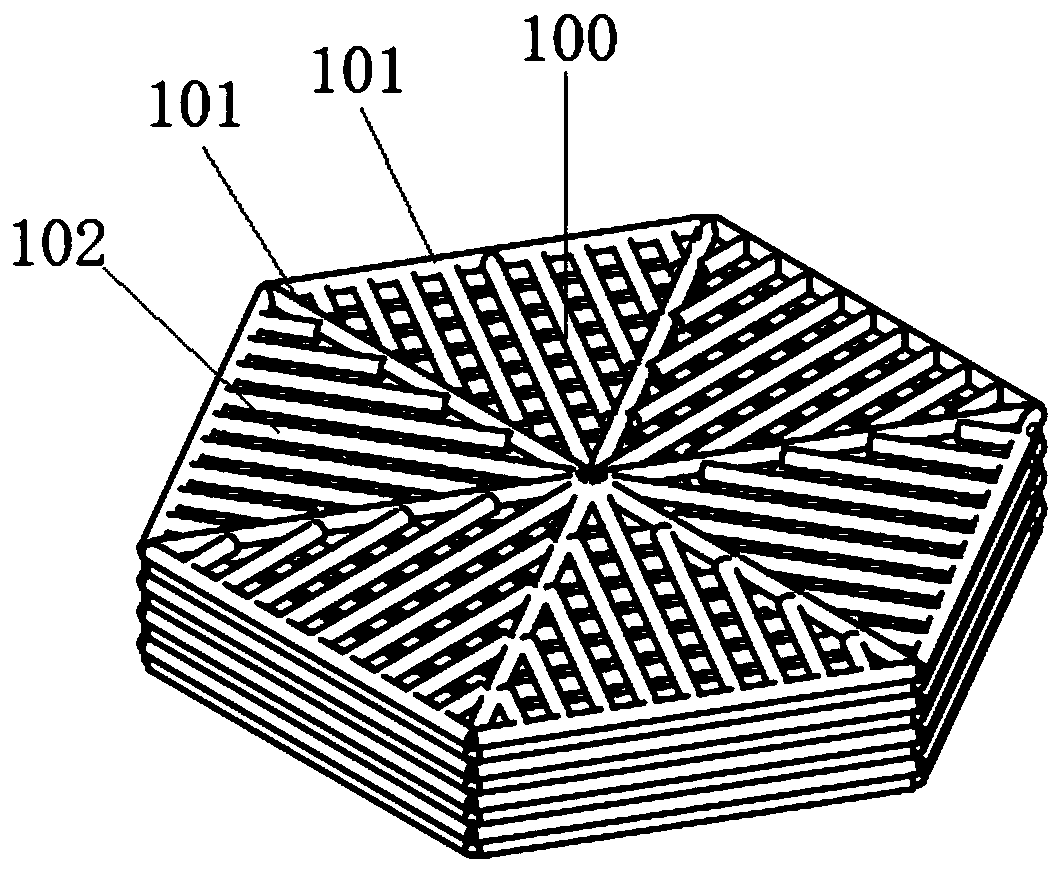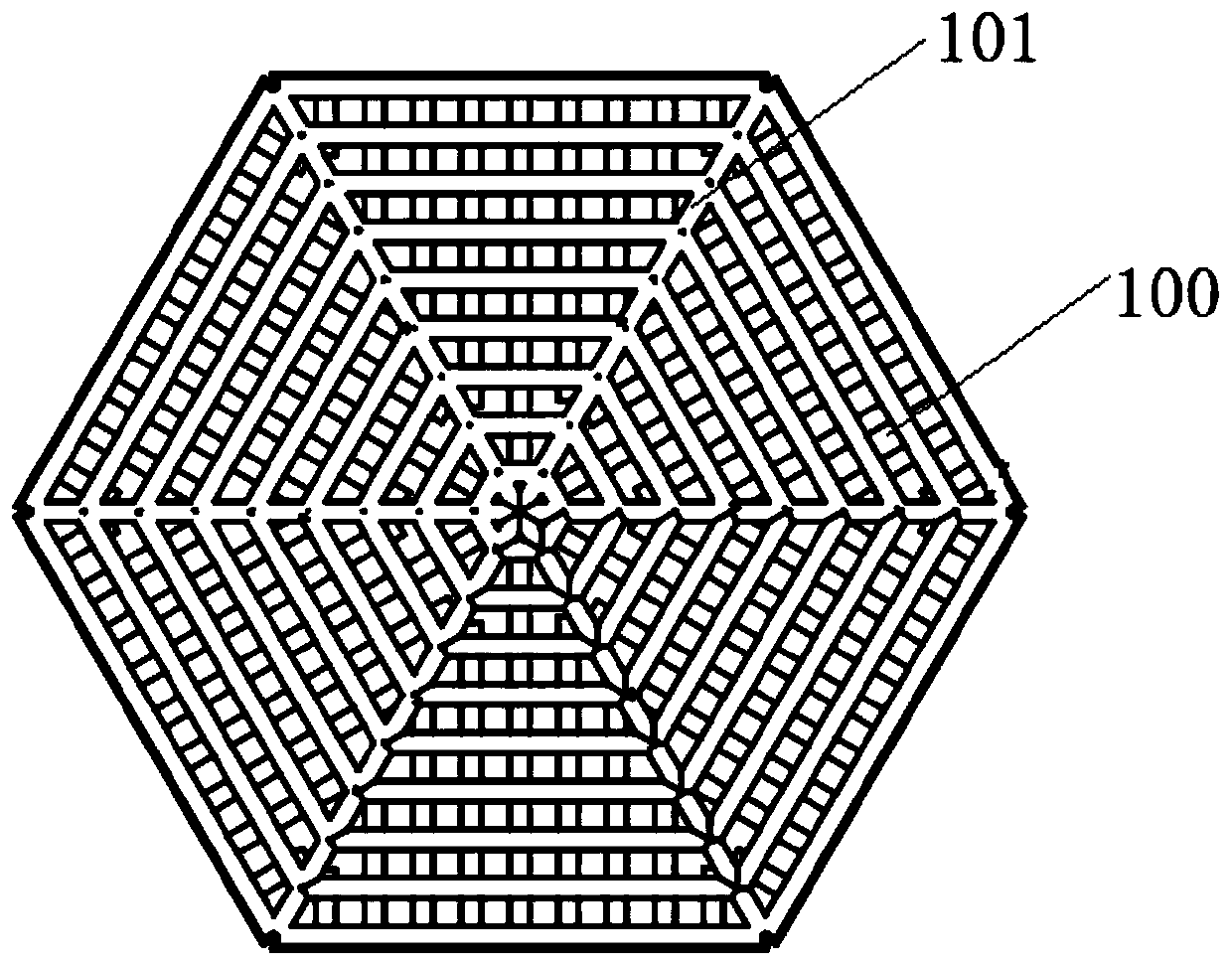Construction method of liver unit stent, liver unit stent and application of liver unit stent in field of drug testing
A construction method and biological technology, applied in drug screening, artificial cell constructs, biochemical equipment and methods, etc., can solve problems such as inability to flexibly change, fixed liver tissue structure, and inability to reach engineering levels
- Summary
- Abstract
- Description
- Claims
- Application Information
AI Technical Summary
Problems solved by technology
Method used
Image
Examples
Embodiment 1
[0065] Example 1: Preparation of Liver Unit Scaffold
[0066] The preparation method of the liver unit scaffold comprises the following steps: (1) mixing gelatin monomer and solvent water at a mass ratio of 10:100 to prepare a gelatin solution, and mixing sodium alginate monomer and solvent water at a mass ratio of 2:100 to prepare Sodium alginate solution; (2) Digest and centrifuge the C3A cells cultured to the fusion stage, resuspend the cells in the medium, and prepare a single cell suspension; Mix the volume ratio to form a composition; (3) inhale the mixed hydrogel cell composition into a microsyringe, place it at 4°C for 1 hour, and assemble it on a 3D printer; (4) design the internal channel of the liver unit, the internal When filling, the nozzles are filled and printed at equal intervals along the first direction, and then the printing platform is lowered by 0.1mm along the Z axis, and the nozzles are filled and printed at equal intervals along the second direction pe...
Embodiment 2
[0070] Example 2: Construction of liver units containing cholangiocytes
[0071] The method of this embodiment includes the following steps: (1) mixing collagen monomer and solvent water at a mass ratio of 1:100 to prepare a collagen solution, and mixing sodium alginate monomer and solvent water at a mass ratio of 2:100 to prepare a collagen solution Sodium alginate solution; (2) Digest and centrifuge the HepaRG cells cultured to the fusion stage, resuspend the cells in the culture medium, and prepare a single cell suspension; press the cell suspension, collagen solution, sodium alginate and cytokine solution at a ratio of 0.05:5 : Mix at a volume ratio of 5:0.05 to form a composition, wherein the cytokine is a mixture of hepatocyte growth factor and insulin-like growth factor, wherein the volume ratio of hepatocyte growth factor and insulin-like growth factor in the mixture is 1 : 1; (3) Inhale the mixed hydrogel cell composition into a micro-syringe, place it at 4°C for 1 ho...
Embodiment 3
[0092] Example 3, the construction method of the liver unit scaffold kit is: (1) gelatin monomer and solvent water are mixed in a mass ratio of 10:100 to prepare a gelatin solution, and sodium alginate monomer and solvent water are mixed in a mass ratio of 2: 100 mixed to prepare a sodium alginate solution; (2) digest and centrifuge the C3A cells cultured to the fusion stage, resuspend the cells in the medium, and prepare a single cell suspension; press the cell suspension, gelatin solution and sodium alginate solution at 1: Mix at a mass ratio of 5:5 to form a composition; (3) Inhale the mixed hydrogel cell composition into a microinjector, place it at 4°C for 1 hour, and assemble it on a 3D printer; (4) Inside the liver unit Channel design, the first layer of nozzles prints the bracket along the first direction. After the first layer, the nozzle fills the bracket along the second direction perpendicular to the first direction, that is, the printing direction is rotated 90°, a...
PUM
| Property | Measurement | Unit |
|---|---|---|
| Diameter | aaaaa | aaaaa |
| Diameter | aaaaa | aaaaa |
| Viscosity | aaaaa | aaaaa |
Abstract
Description
Claims
Application Information
 Login to View More
Login to View More - R&D Engineer
- R&D Manager
- IP Professional
- Industry Leading Data Capabilities
- Powerful AI technology
- Patent DNA Extraction
Browse by: Latest US Patents, China's latest patents, Technical Efficacy Thesaurus, Application Domain, Technology Topic, Popular Technical Reports.
© 2024 PatSnap. All rights reserved.Legal|Privacy policy|Modern Slavery Act Transparency Statement|Sitemap|About US| Contact US: help@patsnap.com










